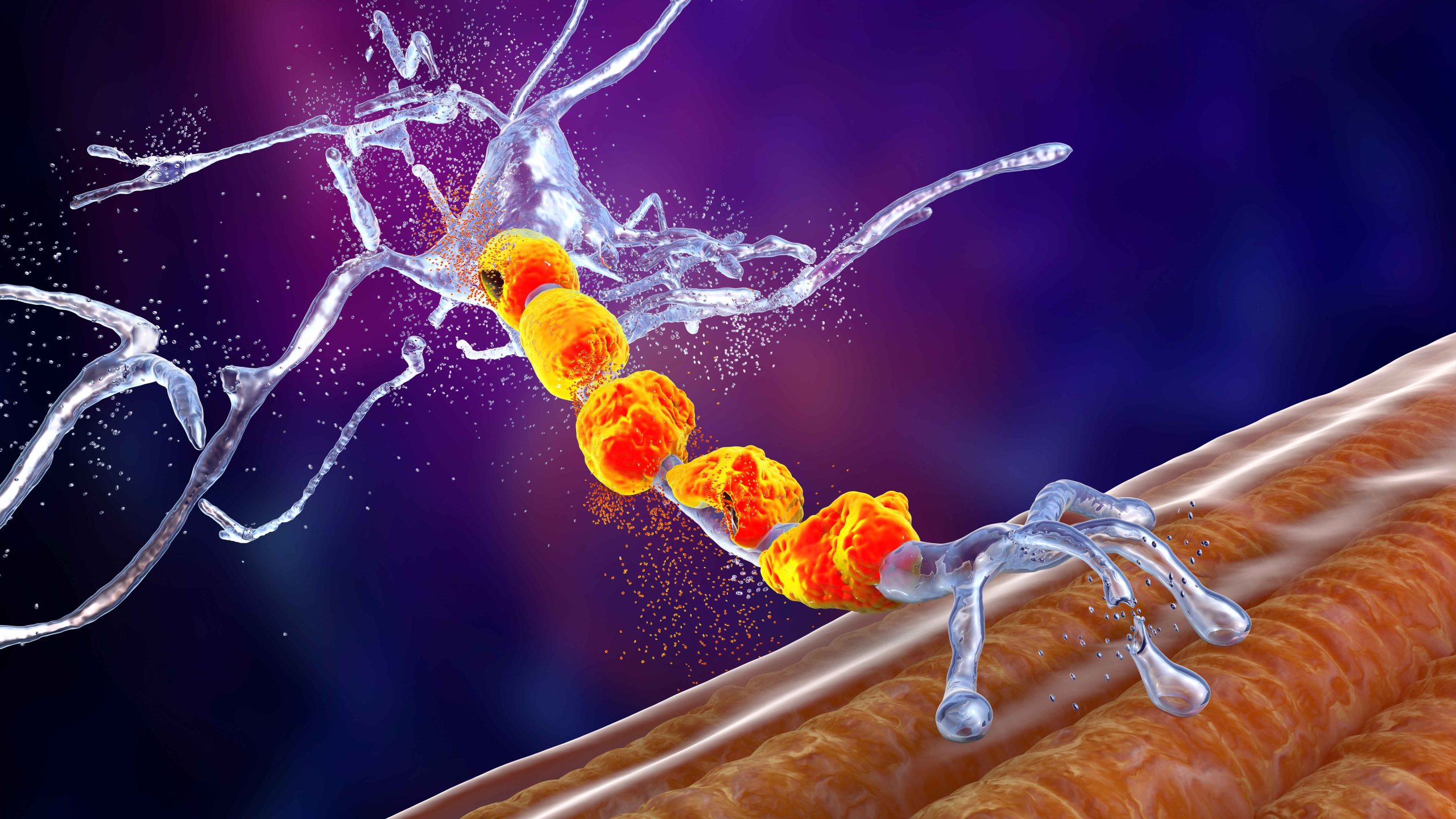Amyotrophic Lateral Sclerosis (ALS), commonly known as Lou Gehrig’s disease, is recognized by the World Health Organization (WHO) as one of the five major incurable diseases. It is the most common motor neuron disease, and patients typically become paralyzed or die within 3-5 years of onset.

On April 25, 2023, the U.S. Food and Drug Administration approved an antisense oligonucleotide (ASO) drug called Tofersen for the treatment of ALS in adult patients with SOD1 gene mutations. This drug is administered via intrathecal injection, targeting the mRNA of the mutated SOD1 gene to promote its degradation, thereby reducing the levels of the mutated SOD1 protein and neurofilament light chain (NfL).
Recently, Umeå University in Sweden announced a breakthrough in ALS treatment. Their research team used gene therapy Tofersen to significantly slow the disease progression in an ALS patient. After four years of treatment, the patient can still climb stairs, stand up from a chair, eat, and speak well, leading an active and fulfilling social life.
Peter Andersen, the lead researcher at Umeå University, stated that this is a breakthrough in over 30 years of research, as they had never seen such effective results with any other treatment. When the patient was diagnosed in early 2020, his expected survival was only 1.5-2 years, but his response to treatment has far exceeded expectations. Tofersen has not only significantly reduced the levels of the pathogenic SOD1 protein but also significantly inhibited the disease progression.
The patient, from a family in southern Sweden, had a relative diagnosed with ALS, and his blood sample was provided to the ALS research team at Umeå University. However, he chose not to be informed of the genetic test results at that time. In fact, he did carry the pathogenic gene mutation for ALS. Four years ago, after showing symptoms of muscle weakness, he was officially diagnosed with ALS caused by the SOD1 gene mutation.
Since the summer of 2020, the patient has been participating in a Phase 3 clinical trial of Tofersen for ALS with SOD1 gene mutations. This trial targets ALS patients with SOD1 gene mutations that cause the misfolding and aggregation of the SOD1 protein in motor neurons. Patients receive experimental treatment once every four weeks.
When a person’s SOD1 gene is mutated, it produces a mutated SOD1 protein in the brain and spinal cord. Over time, the accumulation of this protein kills nerve cells that control muscle movement, leading to ALS symptoms. Damaged or destroyed nerve cells release neurofilaments; the more mutated SOD1 protein accumulates, the more nerve cells are killed, increasing neurofilament levels in cerebrospinal fluid and blood. Thus, neurofilament levels are considered an important biomarker for ALS disease progression.
When the patient was diagnosed in April 2020, his ALS biomarker neurofilament light chain (NfL) levels were very high, reaching 11,000 ng/L in cerebrospinal fluid, which is high even among ALS patients. Four years later, his NfL levels have dropped to around 1,200 ng/L, a nearly 90% reduction. In healthy individuals of his age group, NfL levels in cerebrospinal fluid are typically below 560 ng/L. His blood NfL levels have returned to normal, with the latest measurement at 12 ng/L, within the normal range of below 13 ng/L.
The ALSFRS-R scale shows that the patient’s motor function level, although lower than that of a healthy person (48 points), has remained stable at around 35-37 points over the past 18 months, indicating a decline of about 26% compared to healthy individuals.
For patients with aggressive ALS caused by SOD1 gene mutations, their ALSFRS-R scores usually drop by 1-1.5 points per month. Without treatment, the patient’s disease progression would have been very rapid, likely leading to severe disability within 6-12 months and death within 1.5-2 years. Now, four years after onset, the patient can still climb stairs, which is miraculous. His life has not been significantly impacted; he speaks normally, shops, takes care of his children, and feels mentally much better, regaining hope in life.
ALS is a complex disease, with only 2%-6% of patients having SOD1 gene mutations, which are usually familial. However, some sporadic ALS patients also have SOD1 gene mutations. It is currently unclear whether Tofersen has similar effects on other types of ALS, requiring further exploration.
Tofersen has been approved by the U.S. Food and Drug Administration and the European Medicines Agency (EMA) for treating adult ALS patients with SOD1 gene mutations.
The research team stated that the next step is to study the outcomes of patients treated with Tofersen. While effective for some patients, it has not produced the same positive results for all, which might be due to dosage issues or treatment at different stages of ALS, all of which need further investigation.
What We Do
As one of the leading biotechnology companies in the world, Creative Biolabs has sophisticated equipment and highly experienced staff. Scientists at Creative Biolabs are able to provide you with custom antisense oligonucleotide synthesis services. We also offer a series of ready-to-use antisense oligonucleotide products for various disease research, including cancer, cytomegalovirus retinitis, familial hypercholesterolemia, viral hemorrhagic fever, HIV/AIDS, spinal muscular atrophy, Duchenne muscular, hypertriglyceridemia and other human diseases. Please feel free to contact us to learn more about our capabilities and products.
